 We have finally made it to spring! The lakes have thawed, the migratory birds have returned, and open water has again become a valuable place to teach. With all of that in mind, we have dedicated much of this issue to a focus on educating about aquatic invasive species (AIS) and how to avoid introducing species yourself or through your students. You will find disposal guidelines, activities, and information on funding that Hennepin County has awarded to projects based around AIS. Please help to do your part as an environmental educator focusing by disseminating this information to your students, staff, and fellow educators.
Infestations of aquatic invasive species (AIS) have occurred when aquarium plants and animals are intentionally or accidentally released. Introducing animals and plants from your classroom, nature center, or educational facility into ecosystems in Minnesota can cause harm to our lakes, rivers and streams.
Help prevent the introduction and spread of AIS:
-
Give unwanted plants and animals to another school, environmental learning center, aquarium, zoo, or classroom, or, where possible, return them to the pet store or supplier. If your plant or animal finds a new home with another classroom or is taken by a student, be sure to emphasize “Don’t Let It Loose” into the environment.
-
Sign an Adoption Pledge Form (PDF) with the new owner when organisms are removed from your facility or when a student is allowed to take an organism home to ensure that they are not released into the environment.
-
Dispose of unwanted plants in a sealed plastic bag in the trash. These materials should not be composted because their seeds and other plant parts may spread.
-
Sterilize water from shipments of plants or animals purchased prior to disposing of in the sink. Sterilized with ¼ cup bleach per gallon of water.
-
Contact a veterinarian or pet retailer for guidance on humane disposal of animals. Disposal of live organisms should be considered as a last resort.
If you suspect you may have received a prohibited species in a shipment or a student brings one in, please contact the Minnesota Department of Natural Resources AIS Specialist, Keegan Lund, at 651-259-5828 for additional instructions.
Examples of classroom pets and plants that are invasive in Minnesota’s ecosystem
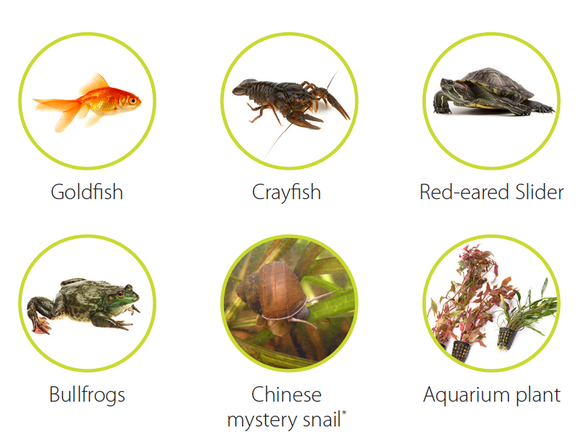 *Image courtesy of the Wisconsin Department of Natural Resources
The impact of AIS entering an ecosystem
Goldfish have altered the ecosystem at Wood Lake Nature Center in Richfield. The center teaches Freshwater Ecology classes to students every spring. Since the goldfish arrived, the experience during those classes has changed considerably. They used to get about 15 macroinvertebrate species when sampling with students, but are now lucky to see one to three. They have also witnessed a decline in geese and ducks nesting on the lake. |
|
 |
Photo credit: Vera Olcott
Hennepin County awards grants to prevent spread of aquatic invasive species
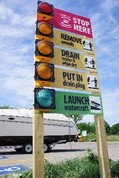 |
|
The Hennepin County Board recently awarded 10 aquatic invasive species (AIS) prevention grants totaling $176,000.
Organizations will use funding to train volunteers to detect AIS early in lakes, expand inspections and outreach at public lake accesses, install boat cleaning stations, and fund research and education. Grants will support projects on more than 20 lakes throughout the county.
|
2019 grant recipients focused on AIS education
- Bassett Creek Watershed Management Commission: $10,000 to conduct aquatic vegetation surveys in six lakes, host an AIS early detection workshop and sponsor other education and outreach opportunities
- Boys and Girls Clubs of the Twin Cities: $20,000 to redesign Little Long Lake public access for AIS prevention, which includes a CD3 waterless cleaning system Christmas Lake Homeowners Association: $10,000 to fund inspections at the Christmas Lake public access
- Lake Sarah Improvement Association: $22,000 to research patterns of boating traffic to inform AIS prevention action steps
- Minneapolis Park and Recreation Board: $8,000 to pilot the use of environmental DNA technology to search for zebra mussels in six Minneapolis lakes
- Wayzata Sailing Foundation: $14,000 to engage 300 youth in discovery, monitoring and exploration of AIS in Lake Minnetonka
Read a summary of 2018 accomplishments from the AIS prevention grant projects and other county AIS efforts.
Educational resources
Invasive species focused resources
Introduction to invasive species activity — National Geographic
This 45 minute activity for grades 6 - 8 helps students learn about what invasive species are, what leads to them being introduced to new locations, how invasive species can impact ecosystems, and direct impacts they can have on students’ lives. Access the activity lesson plan and supplemental information here.
Hungry Pests activities — USDA
This packet includes multiple activities for youth and are designed to be used in different outdoor and indoor settings. Youth will learn about the threat of invasive species through these fun and interactive activities. They will come away with the knowledge needed to help prevent the spread of invasives. Get the activity packet (PDF).
Tangled Ecosystem video — U of MN Extension
University of Minnesota Extension Forestry Educators have released a new seven minute video that investigates how forest management and buckthorn removal may impact agriculture and soybean yields. While the video focuses on soybean aphids and other invasive pests, it’s a great example of how the removal of buckthorn can contribute to a number of overall positive benefits for the ecosystem. View the video.
General educational resources
Collect data on trees using NASA’s Globe Observer mobile app
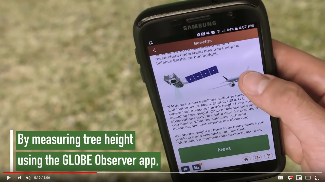
The Globe Observer app from NASA turns your phone into a tree-measuring tool and you into a citizen scientist. Aim your phone to the top and base of a tree. Then you can share your results with other observers around the world and NASA can use your data to compare to their satellite's calculations.
|
New activity book available featuring the Adventures of Recyclo!
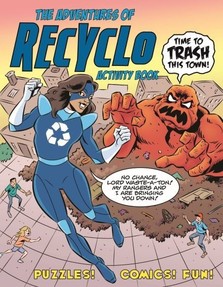 |
|
Check out “The Adventures of Recyclo!” — an activity/coloring book about recycling for pre-readers up to 5th grade readers. The book features the superhero Recyclo, who teaches youth the value of recycling — all while fending off villains like the evil Lord Waste-A-Ton. Order copies of the new book on our Environmental education pamphlet order form (under “Top picks”). |
Events and training opportunities
Tour unique, environmentally conscious buildings during Doors Open Minneapolis
Doors Open Minneapolis, coming up on Saturday and Sunday, May 18 - 19, is an event that allows the public free, behind-the-scenes access to buildings in Minneapolis that are architecturally, culturally, or socially significant. Here is a list of locations with an environmental component – for a full list of locations, addresses, and hours visit the Doors Open website.
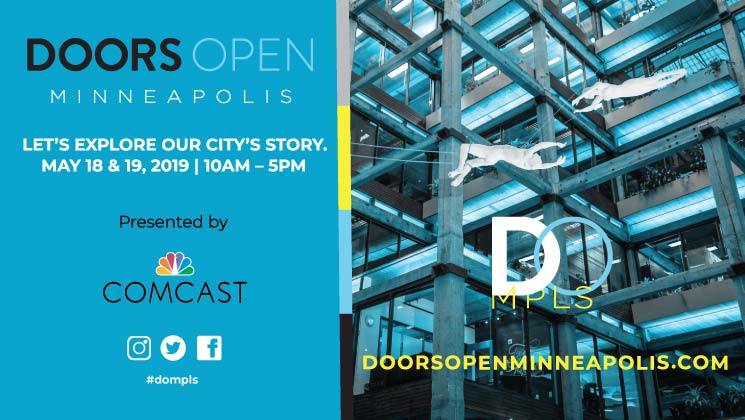
-
The Hennepin Energy Recovery Center (HERC). HERC converts Minneapolis’ trash into energy that provides electricity to 25,000 homes and heat to Target Field and downtown buildings. Visitors can learn how HERC works, see the waste pit and trash trucks on a live video feed in the visitor center, and discover ideas to reduce waste.
-
The Carl W. Kroening Interpretive Center. This center was built in 2002 using techniques that minimized its environmental impact, including low-flow plumbing fixtures, passive solar energy and items made from renewable and recycled resources. Meet one of their live-education animals, view an exhibit on the building and local history or take a guided park tour.
-
Izzy’s Ice Cream. Learn about Izzy’s story, where ingredients come from, and how ice cream is made in a behind-the-scenes tour through Izzy’s Ice Cream kitchen. The owners worked with an architect to seriously consider environmental impact issues like sustainability, which led them to consider using alternative energy sources. Izzy’s now uses solar power for a third of its energy needs.
-
K&K Metal Recycling. Tour the historic buildings where the first Caterpillar tractor was fabricated in 1909. Today, the reused buildings facilitate metal recycling at an unparalleled level of efficiency and environmentally sustainable processes. Roof-mounted solar energy panels and close attention to groundwater quality are just two of the many exciting things happening behind the scenes.
-
Love Your Melon Studio. The Love Your Melon Studio exemplifies the creativity of the Twin Cities and is used for events, photoshoots and as a showroom for exclusive product drops. The Revitalize Collection, featuring their first-ever products made entirely from recycled plastic water bottles, will be available for purchase during Doors Open Minneapolis.
-
Manhole Entrance - City of Minneapolis Public Works Surface Water and Sewers Division. Do you know where the water from your toilets and sink go? The City of Minneapolis will open a sewer manhole and set up a closed-circuit televising truck so you can see the inside of the sewer system and learn all about it! Safety equipment and staff will be on hand.
-
Minneapolis Central Library. The Minneapolis Central Library is the largest library of the Hennepin County Library system. Designed by world-renowned architect César Pelli with a focus on sustainable design, it offers an array of programming and is host to a variety of community and cultural events.
-
Minneapolis College of Art and Design. MCAD has created a sustainable campus environment. Their Sustainability & Art Tour will feature art and landscaping that create aesthetically pleasing and environmentally friendly spaces. For a full list of other green accomplishments, visit this webpage.
-
MoZaic East. An excellent example of a building that was built with alternative transportation methods in mind, the design was meant to create strong and pleasing pedestrian and bike connections along the northern edge of the site. MoZaic East provides 52 outdoor and 76 indoor bike racks and enhanced bicycle amenities, such as showers and lockers, while maintaining the previously installed Greenway Pedestrian Bridge and the covered walkway to the Uptown Transit Center.
-
Pillsbury A. Mill Underground. Visit the lower levels of the National Historic Landmark Pillsbury A Mill and see the largest direct-drive waterpower system in Minneapolis. A waterpower system taps the potential energy stored in water and turns it into kinetic energy by controlling its natural fall.
-
Surly Brewing Company. The brewery received grants from Hennepin County’s Environmental Response Fund to assist with environmental clean-up before site development. Learn about the history, the building, and the process.
-
Target Field and Target Field Station. Take a guided tour of Target Field with all its sustainable features, artwork and Minnesota Twins history. At Target Field Station, you’ll learn about all of the field’s sustainable efforts to capture and reuse storm water throughout the plaza.
-
Woodchuck USA. The company was founded to bring nature back to people’s lives while leaving the planet better off for it. The products are a gentle reminder to get out, explore and let nature invigorate you. Since 2015, they’ve planted over 1.3 million trees around the globe, affecting reforestation on all 7 continents, aiming to secure the biodiversity of our forests for future generations.
Project Learning Tree online trainings available
Project Learning Tree is an environmental education program designed for educators working with youth from preschool through grade 12. Training around this great resource is now available online. Learn more here.
Recap: Integrating behavior change into environmental education program training
Educators and program managers from government agencies, nonprofits, schools, and other organizations gathered together on May 9 at the second Hennepin County Environmental Education Network Training of 2019.
The training was held at Washburn Library in Minneapolis with presenters from Hennepin County. Participants learned how to integrate behavior change and social marketing practices into program development. Interactive activities and networking were also parts of this great training Thank you to all who attended!
Learn more about behavior change and social marketing:
Future training opportunities
Our next network training will be in August focusing on the BEETLES education approach presented by staff from Three Rivers Park District. Learn more and register for the training here
The following are updates on grant projects funded through the Green Partners Environmental Education grant program.
Clean Water Fund
 The Clean Water Fund is launching a new initiative to reduce disposables by engaging volunteers and people that work in downtown Minneapolis to reduce packaging from food and beverage to-go items.
Single use food packing is often trash and accounts for an increasing amount of solid waste and debris in landfills and Minnesota waterways. Reminding people to use and bring reusable cups, straws, or utensils will be the primary focus of the project.
In addition to direct outreach, Clean Water Fund plans to increase knowledge of the topic through a social media campaign asking people to “ReThink Disposable” and addressing barriers specific to using reuseable items and preventing waste.
North Hennepin Community College: Dave Larsen American Indian Immersion Experience
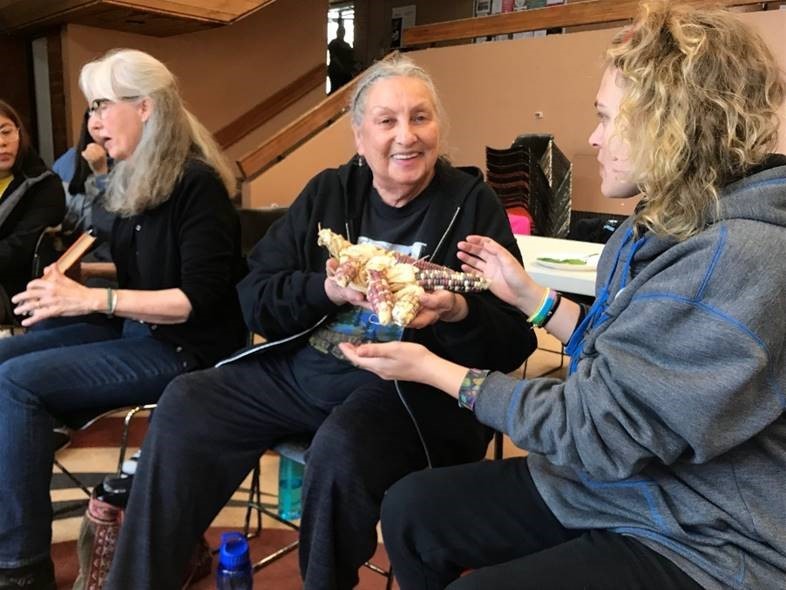 The focus of the Dave Larsen American Indian Immersion Experience class was to immerse students in a Native American cultural experience while educating them about their environmental impact on the planet.
Throughout the school year, students learned about and researched different aspects of American Indian history and culture, specifically focused on practices that contribute to healthy communities and environmental sustainability. The students took a field trip tour in April 2019 where they learned first-hand from elders and tribe members in central and southern Minnesota about topics such as sustainability, land use issues, and planting and harvesting techniques. Students also learned about seed saving and native food and plant species in Minnesota.
It was nice to not leave waste wherever we went and that we were learning about how tribal nations have been some of the pioneers for green friendly living.
To prevent waste during the trip, students were provided with a pack of reusable food utensils and containers and were asked to recycle. “It was nice to not leave waste wherever we went and that we were learning about how tribal nations have been some of the pioneers for green friendly living.” said student Arshon Brown. These actions provided students the opportunity to contribute to the sustainability of tribal cultures.
The Dave Larsen American Indian Immersion Experience class is a partnership between North Hennepin Community College, Robbinsdale Area Schools, the University of Minnesota Twin Cities, Columbia Heights School District, Anoka-Hennepin School District, Edina Public Schools, Mounds View Public Schools and several tribal nations and colleges including Leech Lake, Fond Du Lac, Red Lake, Prairie Island and the Upper and Lower Sioux Communities in Minnesota.
Grants and funding opportunities
Toshiba America Grant Program for innovative science and math approaches
The Toshiba America Foundation is accepting applications from 6 - 12 grade teachers who are passionate about making science and mathematics more engaging for their students. Teachers in public or private (nonprofit) schools may apply for grants to support classroom science and mathematics education to help increase students’ engagement with the subject matter and improve their learning. Awards vary.
- Applications for requests less than $5,000 are due June 1, September 1 and December 1, 2019.
- Requests for grants of $5,001 and greater are due May 1 and November 1, 2019.
-
Learn more and apply.
|